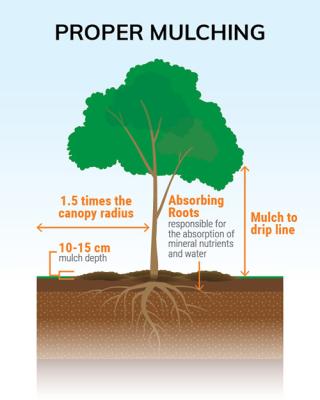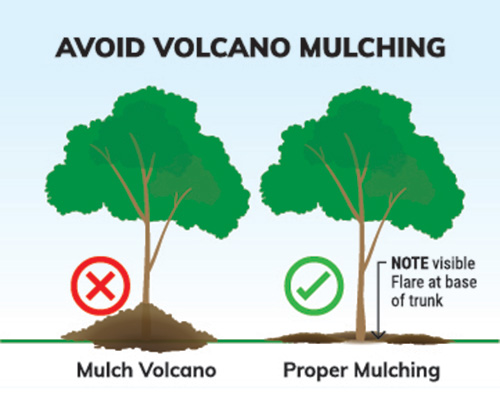Street Tree Planting Program

For more information
Call 905-546-2489 or
Email [email protected]
Monday to Friday 8:30 am to 4:30 pm
The City of Hamilton plants street trees on the publicly owned portions of roads in front of homes, businesses, institutions, etc. The City is always looking for locations to plant trees to achieve our target of 40% canopy coverage and you can help by requesting a City tree in front of your home.
Getting your tree is as easy as 1-2-3!
- Review the program guidelines
- Submit the online request form below or call 905-546-2489
- A Forestry Investigator will visit the site to select an appropriate tree species and schedule the tree for planting
If you live on a standard lot, you can have one (1) tree planted on the road allowance in front of your property per year. The City has minimum spacing requirements for street trees, therefore if you live on a larger lot or rural lot, you may be able to get more than one (1) tree planted over consecutive years.
If you live on a corner lot, you can have up to three (3) trees planted per year. The City has minimum spacing requirements for street trees, therefore if you live on a larger lot or rural lot, you may be able to get more than one (1) tree planted over consecutive years.
Trees are planted from May to June and September to November each year.
A Forestry Investigator will review the site and will select an appropriate tree species. Factors that are considered include: urban and pollution tolerance, soils, presence of overhead utility lines, space, offset requirements from existing features, such as driveways, other trees, utilities, etc.
Hamilton’s approved species list consists of native trees to promote biodiversity and large, shade trees in an effort to reach our urban forest canopy target of 40% (link to Urban Forest Strategy). The list also includes some non-native trees and trees outside their native ranges due to the impacts of Climate Change and the need to select species that are tolerant of urban conditions.
Planting our City with a diverse range of species provides resilience and protection against pests and diseases.
Information cards are left at each house when a new tree is planted by the City of Hamilton. These cards outline the needs of your new tree and provide contact information for questions.
Use these guidelines to keep your tree healthy until it is established:
The Benefits of Mulch
A newly planted tree’s best friend is mulch. All trees planted through the program are installed with a layer of mulch. It is very important to maintain this layer of mulch as the tree grows. Mulching is one of the most valuable things a homeowner can do for a tree’s health, as it:
- Insulates the soil to buffer the soil from heat and cold temperatures
- Retains water
- Keeps weeds out
- Prevents soil compaction
- Reduces lawn mower and string trimmer damage
Mulch is any material placed on the soil to conserve moisture and improve growing conditions. Mulch can be purchased from local nurseries and / or stores that carry outdoor seasonal products. Common mulch materials include wood chips, bark, and pine needles. For added benefit, mix compost into the mulch prior to applying it around the base of the tree.
Proper Mulching
- Apply a minimum depth of 10 cm (4 inches) to a maximum of 150 cm (60 inches) of mulch over the planting area. The wider the mulch ring, the greater the benefit. Mulch out to the tree’s drip line, if possible.
- Maintain this level of mulch as the tree grows, expanding the diameter of the mulch to reach the water roots (to the dripline of the tree).
- Do not pile mulch against the tree trunk. Pull mulch back several inches from the trunk so the base of the trunk and flare are exposed. The mulch-ring shape should resemble a “doughnut” not a “volcano”.
- If mulch is already present, check the depth. You do not need to add more if sufficient layers are already in place.
- Organic mulches are preferred to inorganic materials. Organic mulches should be well-aerated and composted. Avoid sour smelling mulch.
Tree Planting Program Request
Frequently Asked Questions
Trees are planted from May to June and September to November each year. The stump of your old tree must be removed before we can plant a new one. Request your tree early.
No. Tree stumps are removed to a maximum depth of 30 cm. This is not deep enough to accommodate a new tree. The new tree will be planted at least 1 metre away from where the old stump was.
Trees will not be planted in any boulevard where the width of the grass area is less than 1.75 meters.
Contact the City at 905-546-2489 if you have been waiting over a year for a tree. Do not complete an online form if you already requested a tree.
Contact the City at 905-546-2489
When first planted the City of Hamilton waters, mulches and put a tree guard around the trunk of your tree. After that watering and caring for your new tree is your responsibility. All maintenance on your tree such as trimming will be taken care of by the City of Hamilton.
The Street Tree Program only plants trees on the City-owned road allowance of properties. City staff will come out to see if there is enough space to plant a tree on the road allowance of your property. All trees planted on the road allowance belong to the City. They will be maintained by City staff and cared for by you. All trees planted on private property are the responsibility of the property owner, contact a landscape contractor or arborist to ensue proper tree placement and species selection.
Trees are planted at least 6 to 10 meters away from existing trees depending on the species. City staff will see how much space is available and suggest tree species.
Trees are planted at least 6 to 10 meters away from existing trees depending on the species. City staff will see how much space is available and suggest tree species.
Yes, please submit a request. Trees are planted from May to June and September to November each year.



